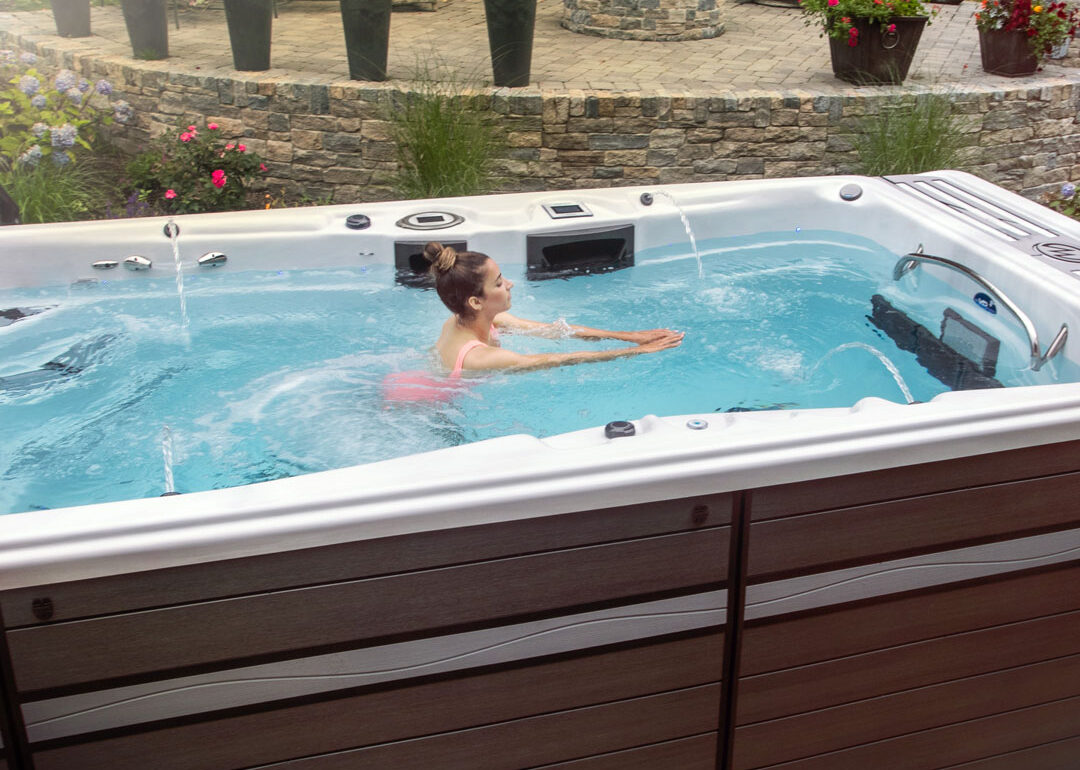For years, doctors and physical therapists have been using swim spas and hot tubs to help their patients recover from injury and surgery. The buoyancy of water decreases the impact that exercise has on your joints, and the heat helps improve range of motion and increases your muscles’ ability to stretch and relax. In recent years spa use for recovery and pain treatment has taken off in the private sector too.
Rick McAvoy, who has his doctorate in physical therapy and is a certified strength and conditioning specialist, has long been an advocate of using water to help people recover from injuries and surgeries. In 2005, he completed a study that found mixing water therapy with land-based therapy increased the knee flexibility and function on patients who had total-knee-replacement surgery.
“A lot of people use their hot tubs to chill out and relax,” McAvoy says. “They’re in this great environment that you can really benefit from exercising in, and if you bought this thing, why not use it? Why not get full use out of it with training and exercise?”
People with any form of arthritis can benefit greatly from exercising in a swim spa. According to the Arthritis Foundation website, “Hydrotherapy is one method of using water to treat arthritis. The soothing warmth and buoyancy of the water makes it a safe, ideal environment for relieving arthritis pain. Using a spa adds another component to the therapy — massage.” Statistics show that one in three Americans suffers from arthritis or chronic joint pain. The Arthritis Foundation states that nearly half of these cases are osteoarthritis, which is associated with aging.
For people who suffer from arthritis and those with other types of chronic pain, like fibromyalgia and ruptured discs, maintaining flexibility is essential to performing daily tasks. Warm water therapy relieves stress on the joints, improves the blood flow to the affected areas, relieves pain and minimizes physical limitations. “Swirling warm water increases blood supply to aching joints, which helps to reduce inflammation and pain,” says Lauren Stack, vice president at Watershape University.
Rheumatoid arthritis is a condition that causes inflammation and swelling in the joints. Because movement is painful, range of motion becomes constricted, which causes the muscles to atrophy – and increases the pain felt during movement. Endless Pools user Joseph Alldredge has lived with rheumatoid arthritis since his late teens, and he had hip replacement surgery about 10 years ago. “I typically work out [in my swim spa] first thing in the morning, in order to get to work by 8 [a.m.],” he says. “And if I don’t, getting loose – any movement really – just seems to take longer.” Exercising in warm water is an extremely effective way to relax muscles, decrease stiffness and achieve greater ease performing exercises.
Meanwhile, swim spas using cool water are beneficial to people who have multiple sclerosis. Dr. Robert Goldberger lives with MS and found his health was significantly improved by installing an Endless Pool in his backyard. “When I began my daily exercising, it was the first vigorous exercise I had had for a long time,” he says. “It didn’t take me long to realize that I’d been missing something very important – a good way to burn enough calories to keep my weight in check while experiencing the pleasant psychological effects of a regular exercise regimen.”
The body’s buoyancy in water allows people with disabilities to enjoy physical activities that would be impossible to do on dry land. That’s what makes swim spas and hot tubs a valuable asset for someone looking for pain relief and recovery right at home.



